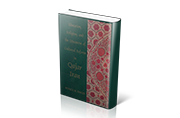Description
Although different elements concerning educational reform in Qajar Iran have been analyzed in the past (Dar al-Fonun, individual reformers, etc.) so far there has not been a book that covered and interrelated all these elements during the entire nineteenth century period placing the movement towards educational reform in its social and historical context. David Menashri provided a short introductory chapter on educational reform during the nineteenth century to his Education and the Making of Modern Iran, but it was basically a springboard to allow him to make his arguments for the period after 1910. In her book, a rewrite of her doctoral thesis, Monica Ringer has taken up the challenge to turn the diverse existing relevant elements into a solid analysis of what drove “modernization” in Qajar Iran as exemplified by education.
She first addresses the question of how useful terms such as modernization and westernization are in the context of her subject? She rightly makes the point that rather than an antithesis between reformers and reactionaries there was a modernization dilemma. That is, the real issue was not whether to have changed or not, but rather how to modernize without losing your cultural identity. The focus of her analysis is therefore on the nature and development of the debate rather than the success or failure of any one point of view.
After this introductory chapter, the remaining six other chapters nicely show the stages through which societal change takes place. In the first stage, the means of the stronger civilization are imported and tried. This experience is discussed against the background of ‘Abbas Mirza’s (d. 1833) attempt to create a modern army based on the European model. This resulted in the import of modern arms, attempts to manufacture these in Iran, the sending of Persian students abroad to learn relevant crafts, and the use of European military trainers. The result was negative because both the number of people driving modernization and its scope were small, and, more importantly, the context in which these new skills had to be used remained unchanged, and consequently, they were neither absorbed nor properly used by Persian society. In the third chapter, Ringer, discusses the evaluation of the failure of reform as formulated by two former students that had been sent to study abroad in Europe and who advanced proposals to resolve the problem of educational reform.
When it became clear that the reforms had not worked, the second phase, which clearly benefited from the experience during the first phase, began. The evaluation had taught the reform-minded people in Iran that the state should take responsibility for educational reform and train elite government cadres to prepare them to lead Iran into the “new world.” This led to the creation of the Dar al-Fonun, a government-sponsored school to train children of the elite. Although European teachers were recruited and a varied, mainly science-based curriculum was introduced, the school was unable to achieve its potential. Lack of consistent royal commitment and opposition by interested parties resulted in a half-hearted attempt to introduce European-style learning into Iran. This attempt was complemented by the sending of students abroad to be trained in various subjects. The opposition not only denounced educational reform because of perceived encroachment of turf but also because of cultural concerns, finding the adoption of European ways and manners offensive. In chapter four Ringer describes how European-style learning was nevertheless able to effectively penetrate Iranian society via a back door. The introduction of missionary schools, later followed by those sponsored by the Alliance Israélite and the Alliance Française, proved to be successful and constituted a challenge to both reformers and reactionaries. Despite opposition to these schools and their occasional closing, they continued to expand.
The third phase of modernization describes how the ‘new’ school movement (chapter five) took hold in Iran. The reformers realized that without educational reform their reforms would come…
Additional information
| Author | Monica M.Ringer |
|---|---|
| Place | California |
| Publisher | Mazda Pablishers |
| Date | 1980 |
| Pages | 320 |
| Volume | 1 |
| Language | English |
| Bibliography | Monica M.Ringer, Education, Religion, and the Discourse of Cultural Reform in Qajar Iran, California, 1980, 320 pages |


